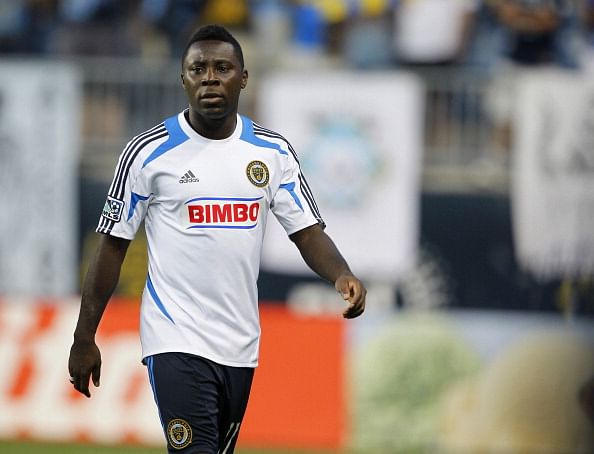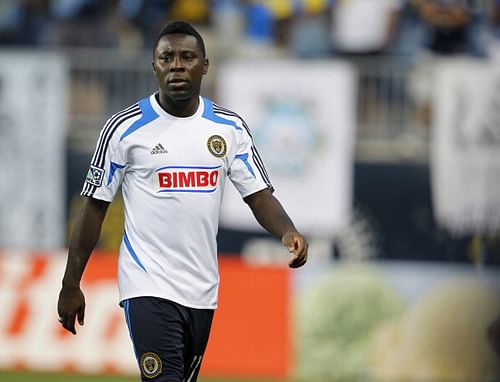
What's happened to the 'new Pele' Freddy Adu?

Freddy Adu was once hailed as the messiah of US football
He was the teenage prodigy of Major League Soccer, once linked with Manchester United and Inter Milan. Now, Freddy Adu is a 24-year-old journeyman. But is his career a failure or a cautionary tale of hype?
On 3 April 2004, Freddy Adu made his professional debut for DC United, coming on as a substitute. He was 14 years old.
From that day, the hype machine kicked into an overdrive. A year earlier, whilst playing with the US under-17 national team, his coach John Ellinger had spoken of a player yet to shave as ”good enough to play Major League Soccer right now”.
While for many outside the US that might have raised a snort or two over the League’s standards, it was a statement borne from the media firestorm surrounding the teenager. His meteoric rise was a version of sorts of the American Dream – only at superspeed, with less toil and more talent.
Just five years earlier, the boy named Fredua had arrived in the United States after his mother won the Green Card Lottery. Settling in Potomac, Maryland, her son continued where he had left off from his days growing up in the port city of Tema, Ghana where he played against men three times his age.
Speed became an element both of Adu’s play on the pitch and his life away from it. Within 48 hours of being brought along by a friend to his first game of organised soccer in the US, he was picked up by a youth team, the Potomac Cougars.
Soon afterwards, he was invited to Italy by the US Olympic Development Program, where people in the know began to take notice of the ten-year-old. A meeting was organised by the Cougars coach Arnold Tarzy between Adu’s mother and representatives from Inter Milan but Emelia, protective of what she saw as people trying to take her son away from the education she wanted for him, said no. “He’s just a young boy,” she protested.
She did, however, concede to allowing Adu to take the next step in his footballing education by enrolling with the IMG Academy in Florida, with the proviso that her son would complete his high school education, albeit at a faster pace.
There, Adu trained with like-minded American football talent, winning praise from coaches and peers alike for his maturity and skill level. Adu-mania was at its peak when, inevitably, dissenting voices began to raise questions. How could a boy barely out of puberty be terrifying grown men with such pace, balance and sure-footedness?
Suspicions were voiced that Adu was older than in fact he purported to be. Rumblings inside US soccer were that certain officials wanted to see bone scans and birth certificates, but the suspicions produced zero evidence.
Meanwhile at IMG, Adu, still a child by a considerable margin, was being pressured to act like the man his coaches wanted him to be – and that American football needed him to be. An insight into the expectations put upon the teenager is provided by IMG’s ‘mental conditioning’ coach Trevor Moawod from a Sports Illustrated feature in 2003.
“Every week [Adu] watches a 15- to 20-minute video of himself,” Moawad said, “so that he can watch himself get upset. And we ask him: Is that the message you want to send?”
Whether a 13-year-old by should be sat down to watch a video of his own flaws and be questioned as to the “message” he’s sending to the public is perhaps an issue open for question. A picture emerges of a player, though evidently blessed with considerable talent, being expected of a greatness for which he was not ready. Adu, by his own admission, was not mature enough to argue otherwise.
“In the beginning, early on in my career, I cared a lot about pleasing other people and what other people thought,” Adu told the BBC in April of this year. “But now I care more about meeting the goals that I set for myself.”